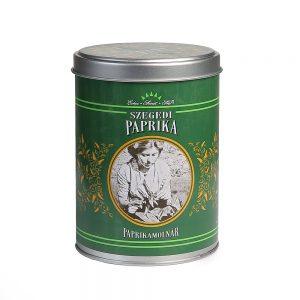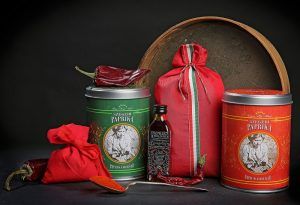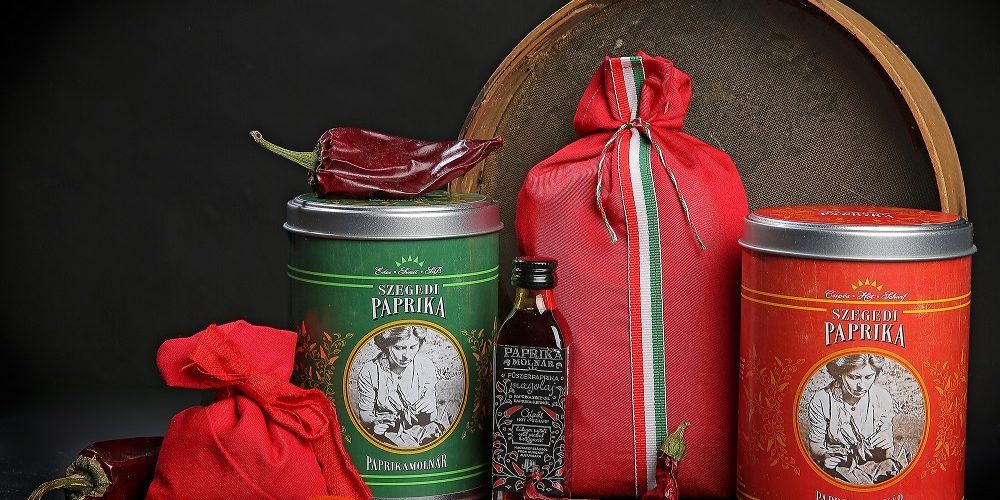This time last year the Paprika Museum at PaprikaMolnar’s factory turned ten and on our tenth-year anniversary. I remembered some outstanding moments and statistics from the past ten years. In this post I’d like to look at the past a little and share some news from the previous one year.
How did the Paprika Museum all start? The idea came from Albert Molnár, who some 15 years ago bought a bunch of documents neatly arranged into files that used to belong to the Szánthó family. The Szánthós had a wheat and paprika mill that operated between the 1890s and the late 1940s, until the state confiscated their entire business property. A heart-breaking story indeed, but what was really surprising was how vivid, how energetic paprika society in Szeged was at the time. Some twenty thousand people – every fifth person – made a living from paprika at the time. It was a basic source of income and helped many families prosper. We decided to build the Museum to commemorate and show all the effort that went into the creation and making of a special local product that proved to be so emblematic in the life of twentieth-century Szeged.
To our greatest surprise, the Paprika Museum to many meant a whole lot more than just a museum. I remember Dragan, a New Zealander for decades, who recognized in the photos the growing technology his Bulgarian gardener parents in the fifties used. His parents had migrated to Hungary in the 1920s and introduced innovative gardening techniques where they settled in south-east Hungary. A woman from as far as Tasmania almost broke into tears when she saw in the photos the local women from Röszke working with paprika because they reminded her so much of her Hungarian mother. She said, touching the women in the photos, nobody in Tasmania has those lovely round-shaped knees and elbows as her mother and these paprika women had.
Our most famous visitor was Marianne Krencsey, a lovely actress in the 1950s. The busiest and funniest time was filming a paprika show by Gasztroangyal, a popular Hungarian gastro-production. And, there were a whole lot more people and visits I remember: families that chose to spend their holiday in south-east Hungary, schools groups and projects, and people who were hunting for past memories and an image of a Hungary that has recently become a thing of the past: houses where there are paprika garlands hanging everywhere.
In the past one year we started advertising in the local newspaper to ask people to submit stories, photos, whatever they had of the old paprika days. Stories are slowly coming in and we are planning to put together all the little pieces of the past into a Paprika Book. A major project!
We renewed our promotion film and it turned out to be great! We had a drone flying over the paprika mill that shows all the beautifully laid red paprika bags in our courtyard. In the film we included everything we thought crucial in paprika history: Szeged and its people, the sunshine, the farmers’ care and the paprikamillers’ expertise and PaprikaMolnár team, of couse!
We also launched a new set of paprika boxes – kind of gift packaging, but comes handy at home, for anyone – containing Szegedi paprika sweet and hot, 200g. We chose as the main design a famous photo of a woman from 1930s Szeged, who is making a paprika garland. We added into the tin box a brochure of Szeged paprika history and some recipes.

Paprika box with archive photo
We added a webshop to our site www.paprikamolnar.hu/english, where you can buy freshly milled paprikas and spice mixtures from our Mill. And, soon we are launching www.paprikamuseum.com, a kind of Learn and Buy site geared towards Engish speakers, which will be housing English-language blog posts, recipes and a webshop.
See you in the Paprika Museum, too.

Some products of PaprikaMolnár Ltd
Tetszett a cikk? Ha szeretne még paprikás és fűszeres témában, heti rendszerességgel cikket olvasni, hírt kapni az ÚJ paprika elkészültéről, iratkozzon fel hírlevelünkre. Subscribe to our Blog and enjoy our Paprika Poster.







